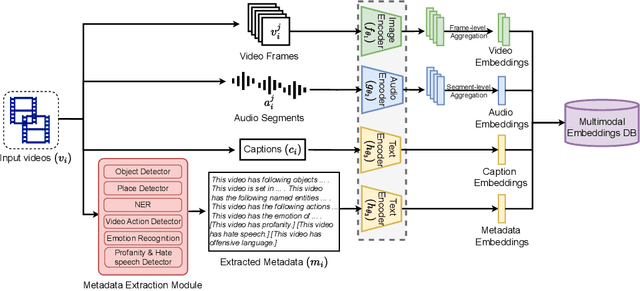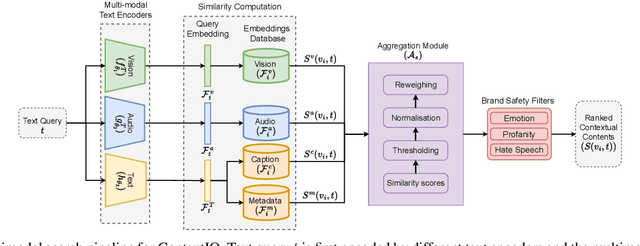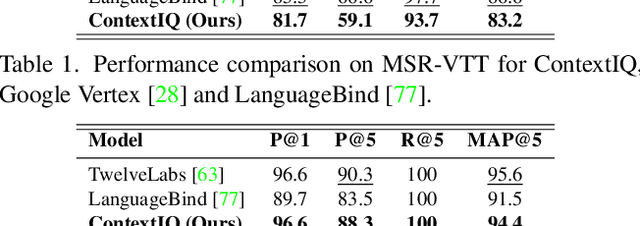Sartaki Sinha Roy
ContextIQ: A Multimodal Expert-Based Video Retrieval System for Contextual Advertising
Oct 29, 2024



Abstract:Contextual advertising serves ads that are aligned to the content that the user is viewing. The rapid growth of video content on social platforms and streaming services, along with privacy concerns, has increased the need for contextual advertising. Placing the right ad in the right context creates a seamless and pleasant ad viewing experience, resulting in higher audience engagement and, ultimately, better ad monetization. From a technology standpoint, effective contextual advertising requires a video retrieval system capable of understanding complex video content at a very granular level. Current text-to-video retrieval models based on joint multimodal training demand large datasets and computational resources, limiting their practicality and lacking the key functionalities required for ad ecosystem integration. We introduce ContextIQ, a multimodal expert-based video retrieval system designed specifically for contextual advertising. ContextIQ utilizes modality-specific experts-video, audio, transcript (captions), and metadata such as objects, actions, emotion, etc.-to create semantically rich video representations. We show that our system, without joint training, achieves better or comparable results to state-of-the-art models and commercial solutions on multiple text-to-video retrieval benchmarks. Our ablation studies highlight the benefits of leveraging multiple modalities for enhanced video retrieval accuracy instead of using a vision-language model alone. Furthermore, we show how video retrieval systems such as ContextIQ can be used for contextual advertising in an ad ecosystem while also addressing concerns related to brand safety and filtering inappropriate content.
Robust and lightweight audio fingerprint for Automatic Content Recognition
May 17, 2023Abstract:This research paper presents a novel audio fingerprinting system for Automatic Content Recognition (ACR). By using signal processing techniques and statistical transformations, our proposed method generates compact fingerprints of audio segments that are robust to noise degradations present in real-world audio. The system is designed to be highly scalable, with the ability to identify thousands of hours of content using fingerprints generated from millions of TVs. The fingerprint's high temporal correlation and utilization of existing GPU-compatible Approximate Nearest Neighbour (ANN) search algorithms make this possible. Furthermore, the fingerprint generation can run on low-power devices with limited compute, making it accessible to a wide range of applications. Experimental results show improvements in our proposed system compared to a min-hash based audio fingerprint on all evaluated metrics, including accuracy on proprietary ACR datasets, retrieval speed, memory usage, and robustness to various noises. For similar retrieval accuracy, our system is 30x faster and uses 6x fewer fingerprints than the min-hash method.
 Add to Chrome
Add to Chrome Add to Firefox
Add to Firefox Add to Edge
Add to Edge